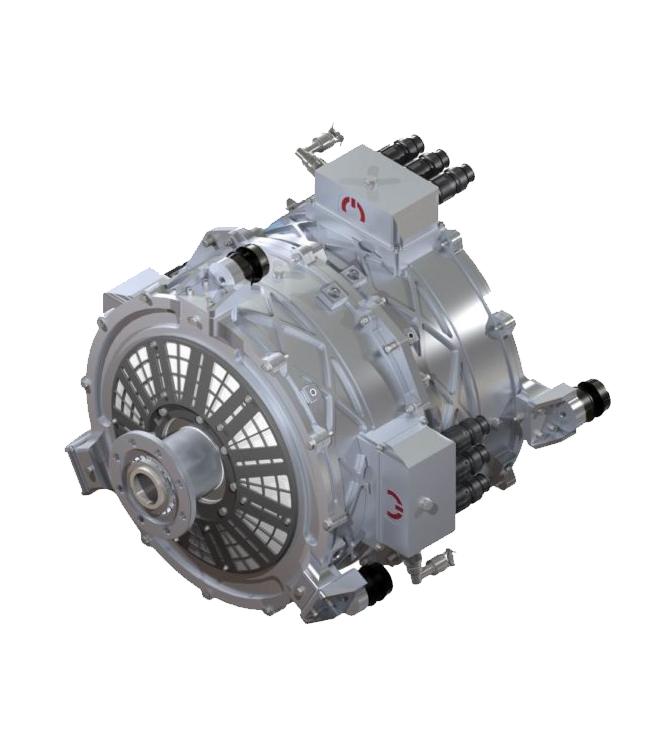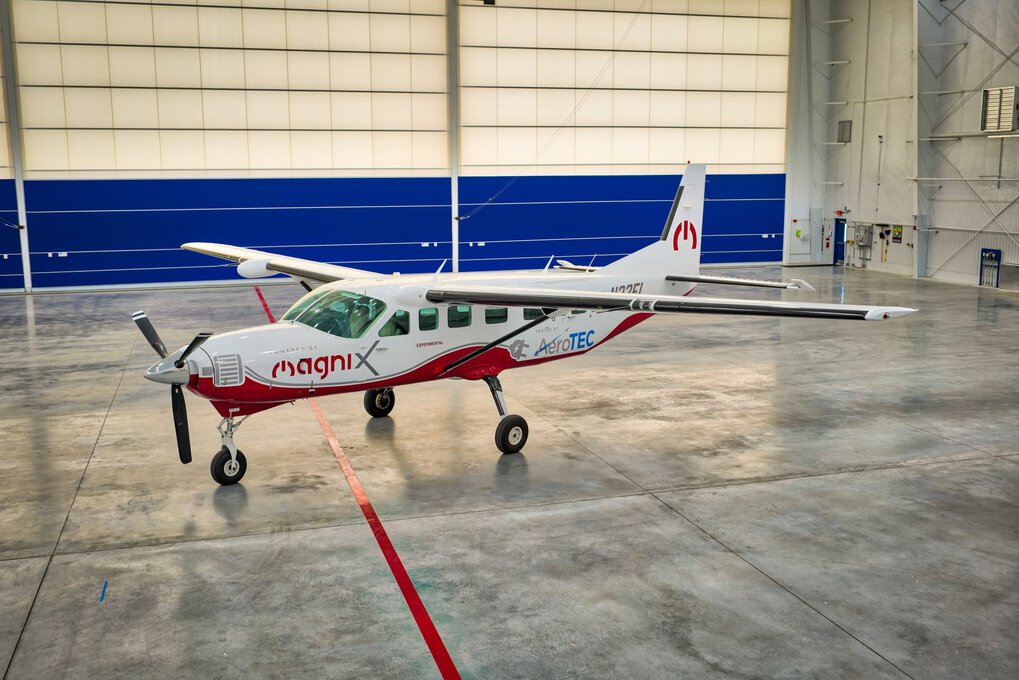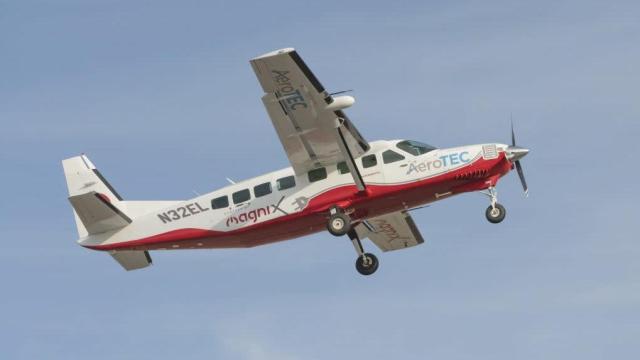Seattle’s AeroTEC has raised electric propulsion flight to new heights with its battery-powered Cessna 208B Grand Caravan. Powered by an Australia/American-built MagniX magni500 motor making 750 horsepower to the propeller and backed by nearly 907 kg of litium ion battery cells, the so-called eCaravan completed its first successful flight last week. This makes the eCaravan the world’s largest all-electric commercial aircraft.
MagniX is the same company that powered an electric De Havilland float plane operating in Vancouver, British Columbia in December of last year. Electric flight is proving not only to be viable for short distance travel, but potentially more profitable as well with no fuel cost and far less maintenance.
A Cessna of this size typically consumes about 178 l of fuel per hour of flight, and while this plane can only do about one hour at its 161 km per hour cruising speed, it doesn’t burn even a single drop of fuel in the process. The whole point of this test was largely to confirm that the magni500 motor in this plane could pull around something this size in the first place, and it clearly can. The maiden voyage concluded after about 30 minutes of flight time.

In this test plane, the fuselage was not modified in any substantial way as to fit the batteries, so the batteries were simply plonked down in the belly of the beast, taking up the area where passengers would traditionally sit.
The ultimate goal of test beds like this is to completely replace ICE planes flying regional routes out of smaller airports with a dozen or so passengers travelling between 50 and 805 km. Currently the barrier is found in the weight and density of batteries, but as batteries improve, this will become a more viable method of transportation.

MagniX worked with Seattle-based AeroTEC to build the electric plane as an experimental aircraft and help the process of certifying it for eventual commercial use. This technology isn’t ready quite yet for widespread replacement of traditional fuel-burning air travel, but MagniX believes that at the rate battery technology is progressing, it’ll have the ability to fly 1,448 km on a single charge in five years, and double that by the end of the decade.
MagniX CEO Roei Ganzarski says that he expects FAA certification of the magni500 motor for commercial aircraft use by the end of 2021. Once that is complete, the De Havilland and Cessna-based electric planes could begin certification for commercial operation as soon as 2022.
